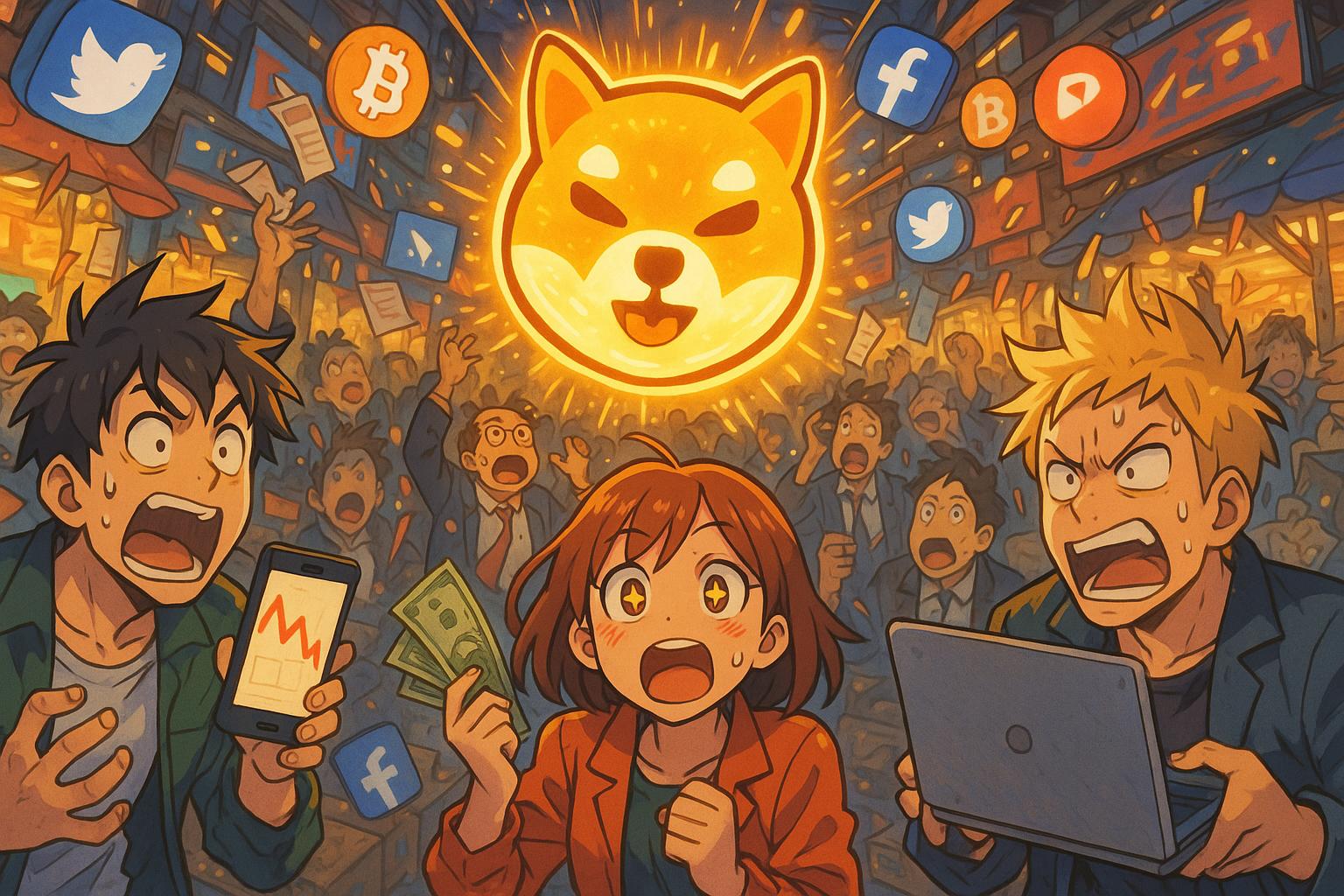In a world where the boundaries of finance blend seamlessly with cultural phenomena, memecoins have emerged as a peculiar yet rapidly evolving segment of the cryptocurrency market. Recent experiences of journalists and influencers alike have brought into sharp focus the dangers and absurdities of a financial ecosystem driven by viral attention rather than underlying value. Matt Shea's unforgettable immersion into the memecoin world starkly exemplifies this trend.
In November of last year, Shea found himself at the centre of a whirlwind as several memecoins—including one known as Dork Nerd Geek ($DNG), featuring his face—skyrocketed in value from an initial market cap of $29,000 to an astonishing $800,000 within just a couple of hours. The coin was minted seemingly for sport, thanks to Andrew Tate, a controversial figure known for his polarising views and alleged scams. Real-time fluctuations in the market, driven solely by Tate’s livestreaming antics, illustrated the chaotic mechanics of the memecoin economy, where value appeared to be dictated by whim and social media hype.
As Shea observed during that chaotic livestream, phrases uttered by Tate could prompt significant fluctuations in memecoin valuations, with some coins soaring before crashing back to obscurity within minutes. The tape of events revealed not just the reckless gamboling of Tate’s followers but also highlighted a systemic issue within the memecoin sector. While Shea’s experience felt surreal, it was far from unique, with significant numbers of investors collectively losing hundreds of millions of dollars during similar episodes. According to a 2024 report, losses attributed to memecoin scams tallied over $500 million, as influencers attempted to manipulate market conditions with little regard for their followers' financial well-being.
Compounding the complexity of memecoins is the phenomenon of the "rug pull," a term that has become synonymous with the darker side of crypto trading. This tactic involves the creators of a memecoin inflating its price through hype, often instigated by influencers, before ultimately selling off their shares when the value peaks. Observers like David Gerard contend that this is more than mere speculation—it represents a model that inherently benefits insiders while leaving majority investors with lost capital.
Interestingly, memecoins are distinguished by their blatant lack of utility. While many cryptocurrencies are positioned as revolutionary financial instruments, memecoins knowingly reject this narrative. As Sander Lutz noted, they offer a unique narrative, akin to a stock in a cultural phenomenon—like the revered Dogecoin. Many treat them as humorous reflections of mainstream financial trends, yet their pervasive acceptance disguises an underlying risk that echoes the cyclical nature of gambling. The notion that early investment might yield wealth persists among hopeful traders, yet the harsh reality is highlighted by figures showing that only a fractional percentage of investors had substantial returns from their memecoin dealings.
The allure of memecoins is particularly potent among a younger demographic disillusioned by traditional financial structures. Pew Research indicates significant investment interest among men aged 18 to 29, reflecting wider frustrations with economic uncertainty. According to Lutz, this demographic alignment indicates a shared sentiment of anger, nihilism, and disillusionment, not just towards finance but broader societal norms. This overlap is particularly pronounced in the circles surrounding influencers like Tate, where the appeal of quick financial gains dances dangerously close to exploitation.
Amidst this chaos, the landscape took a noted turn as former President Donald Trump launched his own memecoin, $Trump, which surged to a market cap exceeding $2.5 billion shortly after its inception. Unlike its predecessors, $Trump offered tangible access—a dine-and-interact opportunity—building its allure and market value. However, even this seemingly innovative offering drew scrutiny; analysts quickly pointed out that only a minority of holders profited significantly, while many smaller investors faced devastating losses.
The intertwining of politics and memecoins raises serious questions about regulatory oversight. Critics argue that the recent laxity in regulatory action, especially following the SEC’s withdrawal of multiple lawsuits against high-profile crypto firms, has created an environment ripe for exploitation. The assertion that the government should intervene in misleading investment practices has been echoed by concerned voices, yet many worry that the current direction could lead to further financial suffering for amateur investors.
In conclusion, while memecoins attract attention through their chaotic nature and viral potential, they pose significant risks to those drawn into their orbit. The pervasive belief that one might outsmart the system—feeling in control, justifiably participatory—often leads to sobering consequences. As Shea and others have illustrated, the landscape of memecoins is an intricate web of exploitation and naïveté, leaving many hopeful investors and disillusioned fans grappling with the aftermath of quick-tempered trading decisions and misguided hopes for fortune.
Reference Map:
- Paragraph 1 – [1], [2]
- Paragraph 2 – [1], [3], [4]
- Paragraph 3 – [6]
- Paragraph 4 – [5], [6]
- Paragraph 5 – [1], [2]
- Paragraph 6 – [3], [4]
- Paragraph 7 – [4], [5], [6]
- Paragraph 8 – [5], [6]
- Paragraph 9 – [1]
Source: Noah Wire Services
